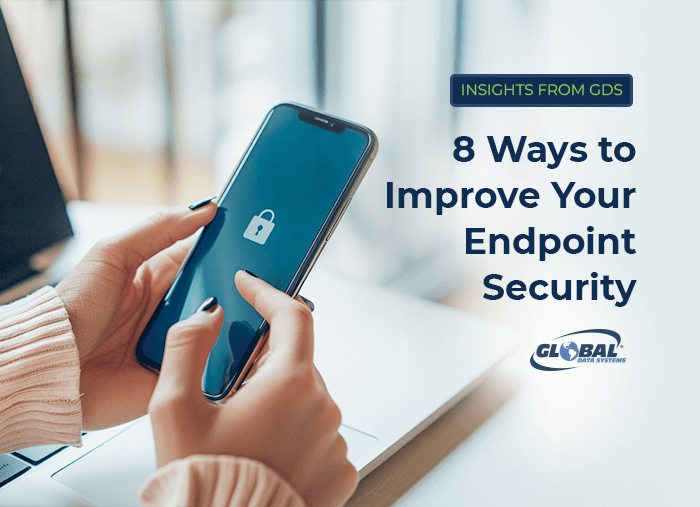8 Ways to Improve Your Endpoint Security
As we noted in our last post about endpoint security, malicious actors increasingly exploit security vulnerabilities in endpoint devices such as laptops, tablets and smartphones. However, endpoint security has become far more difficult due to the huge numbers of remote and hybrid workers using unsupported devices to access network resources.

In a recent survey by CyberRisk Alliance Business Intelligence, 63 percent of IT decision-makers said they have 1,000 or more endpoints in their environments. Just 59 percent of organizations regularly monitor at least 75 percent of their endpoints. That means hundreds of endpoints in the typical environment lack robust protection.
Here are some of the processes and technologies you can use to improve your organization’s endpoint security:
1. Endpoint Protection Platform
EPPs provide an important first line of defense for endpoints by integrating antivirus, antimalware, encryption, intrusion prevention, data encryption and personal firewalls to detect and block threats. Because malware variants use various sophisticated techniques to help evade these traditional defenses, most experts say an EPP should be incorporated with an endpoint detection and response solution.
Let our experts monitor your endpoints around the clock and respond rapidly when threats are detected.
2. Endpoint Detection and Response
EDR solutions continuously monitor endpoints and network events, using advanced behavioral analysis and machine learning to identify suspicious files. When a known threat is identified, the EDR solution triggers rules-based responses such as sending an alert or logging off the user. EDR tools also record data about all identified and suspected threats in a central database for further analysis and investigation.
3. Unified Endpoint Security
UES solutions combine elements of EPP and EDR solutions to enable management of the endpoint security stack from a single console. Some solutions include additional security features such as automated patching, multifactor authentication, policy management, and asset discovery and inventory.
4. Endpoint Encryption
With encryption, sensitive company data residing on laptops, smartphones, USB drives and other devices is rendered unreadable to unauthorized users. Encryption can be deployed in several ways. Full-disk encryption locks down the entire device, including data, files, the operating system and software. Folder encryption can be used to secure specific folders or applications. File encryption is a more granular approach that ensures data is always encrypted whether in storage or during transmission.
5. Zero Trust
Most leading security vendors now offer solutions that use artificial intelligence (AI) to extend zero-trust principles to endpoint devices. These solutions generally incorporate a cloud-based AI platform that continuously monitors all applications and processes running on endpoint devices. Machine-learning algorithms process hundreds of different behavioral and contextual indicators in real time to evaluate all activity. Only apps and processes classified as trusted are allowed to execute on the endpoint device.
6. Network Segmentation
Segmentation limits risks by breaking up the network into smaller, isolated parts. It won’t stop an attack, but it dramatically restricts the attack’s ability to spread. Using firewalls, routers and switches to create isolated network segments, segmentation techniques prevent ransomware and other malware from propagating throughout the network. In the event of a malware infection or network intrusion, segmentation can contain the threat to a single network segment, or subnetwork.
7. Data Loss Prevention
DLP solutions monitor endpoint devices and other network entry and exit points, alerting administrators when the sharing or transfer of data violates company policies. Any out-of-policy data movement or usage can then be interrupted. Additionally, popup messages inform users why actions have been blocked, providing real-time security awareness education.
8. The Value of a Fully Managed Solution
While these tools are valuable, it can still be challenging to monitor and manage growing numbers of endpoint devices. That’s why GDS delivers fully managed endpoint security solutions in a strategic, integrated approach. Let our experts monitor your endpoints around the clock and respond rapidly when threats are detected.
Benefits of Managed IT Services from Global Data Systems
- Strategic Managed IT: We help you solve your technology related business problems.
- Connectivity: We get you reliable, secure connectivity anywhere in the western hemisphere in 48 hours.
- Support: When you need help simply call our 24x7x365 support number.
- Billing: Instead of managing hundreds of vendors - get one, easy to read bill from GDS.
Contact Managed Services Provider, Global Data Systems >
